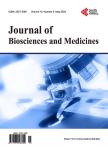Effect of Tetracera potatoria Aqueous Extract on Mellitus Diabetes and Its Complication Preventions in Wistar Rats
Effect of Tetracera potatoria Aqueous Extract on Mellitus Diabetes and Its Complication Preventions in Wistar Rats作者机构:Laboratory of Pharmacodynamics and Experimental Physiopathology Faculty of Science and Techniques Marien Ngouabi University Brazzaville Republic of the Congo Laboratory of Biochemistry and Pharmacology Faculty of Health Sciences Marien Ngouabi University Brazzaville Republic of the Congo Laboratory of Biochemistry Faculty of Science and Techniques Marien Ngouabi University Brazzaville Republic of the Congo
出 版 物:《Journal of Biosciences and Medicines》 (生物科学与医学(英文))
年 卷 期:2023年第11卷第7期
页 面:207-222页
学科分类:1002[医学-临床医学] 100201[医学-内科学(含:心血管病、血液病、呼吸系病、消化系病、内分泌与代谢病、肾病、风湿病、传染病)] 10[医学]
主 题:Mellitus Diabetes Tetracera potatoria Aqueous Extract Alloxan
摘 要:Background: Diabetes is becoming a serious public health issue with expensive treatment that is less accessible to all patients in least developing countries. The traditional African pharmacopoeia offers accessible and lower cost alternative to diabetics’ treatments. Objective: The objective of this study was to evaluate the effect of the aqueous extract of Tetracera potatoria, on diabetes and the prevention of its complications in Wistar rats. In order to evaluate respectively the hypoglycaemic, anti-hyperglycaemic and antidiabetic activities. Methods: an aqueous extract at doses of 200 and 400 mg/kg was tested on normal rats and orally hyperglycaemic challenged rats by 10% glucose (3 g/kg), to induce diabetes by intraperitoneal injection of Alloxan at 50 mg/kg. The glycaemia monitoring, and the determination of biological parameters were accessed through ASAT, ALAT, total cholesterol, HDL-cholesterol, LDL-cholesterol, triglycerides, glycated haemoglobin tests. Results: The aqueous extract at related doses administered to diabetic rats has significantly reduced the mean blood glucose levels in all diabetic rats at 55.56%, 63.34% and 62.38% compared to healthy control batches in the three batches treated. These doses improved the change in body weight compared to the healthy control group. There was an increase of 110.9%, 107.67% and 109.31% respectively after four weeks of treatment compared to the initial weight of the rats. The significant increase (p Conclusions: These results showed hypoglycaemic and antihy-perglycaemic, antidiabetic effects, preventing the installation of some diabetes related complications. The phytochemical parameters of the extract showed chemical compounds which would act the reduction of the putative diabetes and its complications. These indicators show the importance of medicinal plants on diabetes treatment.



